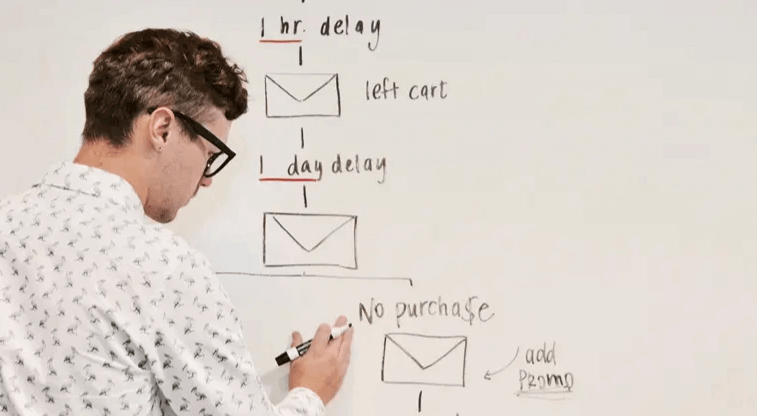Balancing team size with growth targets is a common challenge in SaaS sales. The gap between market potential and scarce customer resources often leads to misalignment in business strategies. Understanding market dynamics, refining customer management, and ensuring replicable sales productivity are key to optimizing performance.
In the design of SaaS sales modules, we often encounter another issue: a discrepancy between the estimated team size and the achievement of growth targets. This results in an expansion pace that fails to align reasonably with growth objectives and business strategies. The root cause of this conflict lies in the evaluation failure between the "infinite potential of the market" and the "scarcity of effective sales and customer resources." This creates a deep gap between "seeing, thinking, and doing."
1. Seeing: The Infinite Potential of the Market
From the basic economic logic, the size of a market is determined by the demand and scale of transactions, which are influenced by three factors: population size, productivity, and communication and transportation technologies.
Population Size Determines the Basic Demand for Transactions
China's so-called population dividend is due to the influx of rural workers into cities, which increased the urban population and, in turn, expanded urban demand for transactions. In rural trade scenarios, grain and basic survival items are often in a state of little to no transaction, and markets mainly fulfill necessary growth needs. The increase in rural population does not drive external demand for transactions. However, rural workers migrating to cities, such as factory workers in Guangdong or job-seekers from western cities moving to major urban centers like Guangzhou and Shenzhen, broke the previous stability of rural transactions, causing a population surge in more developed towns and expanding demand for transactions.
From a mathematical perspective, population represents the most basic unit of demand. Each additional person introduces new basic needs for food, clothing, shelter, and utilities. Policies like poverty alleviation, the pursuit of national prosperity, and the two-child policy in China aim to ensure continuous growth in a population capable of generating effective demand.
China's large population and ongoing urbanization fundamentally suggest that the basic demand for transactions is virtually limitless.Productivity Determines the Basic Scale of Transactions
Productivity dictates the scale of transactions. For example, the invention of the spinning jenny, the steam engine, the internal combustion engine, and electrical technology directly boosted productivity, allowing each individual to produce significantly more in a given time period. This, in turn, increased the overall production capacity of society.
As production increased and costs decreased, people's desire for improved living conditions became more attainable. A simple example is the evolution of mobile phones—from the earliest "brick phones" to analog devices, candy-bar phones, flip phones, and touchscreen smartphones, as well as the shift from utilitarian phones to smart devices. While the functionality of phones has changed dramatically, the prices we pay for them today have not risen significantly compared to the past. In fact, adjusting for inflation, some phones are cheaper now than older models with fewer features. This is a direct result of continued productivity growth and the upgrading of the mobile phone supply chain.
China's continuous industrial upgrades will lead to exponential improvements in productivity, which, in turn, will drive larger transaction volumes.Communication and Transportation Technologies Determine the Speed of Transaction Growth
The advances in communication and transportation technologies affect the speed of transaction growth by accelerating the flow of information and goods.
Information represents opportunity. Faster information transmission allows for more precise decision-making and resource allocation. For instance, if Chinese silk merchants during the Ming Dynasty knew that silk was considered the epitome of luxury in France, they could have confidently increased silk production to trade for silver. Similarly, if Napoleon had access to a radio during the Battle of Waterloo, history on the European continent might have unfolded differently.
Transportation technologies impact the efficiency of commercial flows. In the era of walking, getting lychees from southern China to the capital of Chang'an required imperial orders and the loss of many lives and horses. In the era of horse-drawn carriages, the transport of fresh fruits was a far-fetched idea. During the railroad era, rail lines greatly facilitated the distribution of production materials, though they didn't impact everyday life much. Today, cold-chain logistics allow us to enjoy seasonal produce from all over the country.
The changes in e-commerce, and its influence on releasing and increasing consumer demand, are all influenced by advances in communication and transportation technologies.
These factors evolve and grow, often leading us to an overly optimistic view that the potential market is "limitless."
Objectively speaking, from the perspectives of population, productivity, and communication and transportation technologies, China's market appears almost infinite. However, this optimistic outlook on future targets is not sufficient to inform the proper design of a sales model in the present.
We must evaluate the trends of these factors. For instance, today’s realities include declining population growth, downgraded consumer spending, supply surpluses, insufficient demand, and logistics capacities reaching their limits. Thus, when designing the overall sales model, we must focus on the following principles: reducing staff, improving efficiency, controlling costs, and increasing incentives. This will allow the team to build stability during this period, ensuring the retention and stability of key members while laying the foundation for growth when the cycle shifts.
2. Thinking: The Scarcity of Effective Customers
Given the infinite potential of the market, there is an endless supply of companies, organizations, and institutions offering products and services. Over a longer time horizon, these entities exist in various states of "birth, growth, aging, and death." For example, while 200,000 small and medium-sized enterprises (SMEs) may close, at the same time, 100,000 new SMEs and numerous sole proprietorships will emerge.
However, simply recognizing this large market does not mean it belongs to you. You need a feasible plan and must assess how many of these countless potential customers are truly relevant to you.
The potential market is infinite, but reaching potential customers comes at a cost. Each additional customer increases the cost of customer acquisition.Although the potential customer base is vast, reaching these customers incurs costs. Each person can only effectively engage with a limited number of people—around a thousand throughout their lifetime. Relying on person-to-person interactions to reach customers is an impossible task.
Using the internet to reach customers is a good idea and is, in principle, the simplest and most cost-effective method. Unfortunately, the key to attracting potential customers online is “novel content,” and content creation follows a downward trend—becoming harder as quantity increases. It requires investments not only in time but also in resources, capital, and manpower.
Therefore, as the number of potential customer interactions increases, the cost per interaction also rises. While methods like SEM, SEO, and personal branding can help reduce marginal costs, they cannot eliminate the pressure of continuously growing total costs.Customers who match product needs, have the willingness to pay, and have the ability to pay are limited.Human ideology and decision-making criteria vary widely, and organizations, being composed of people, display even greater diversity in judgment. In other words, when people gather to discuss something, reaching a consensus is far more difficult than deciding individually whether to buy a Huawei or an Apple product.
Besides subjective agreement, we must consider the current business situation—whether the customer is willing to pay, capable of paying, and whether the product and business needs align with expectations. How many customers can meet all these criteria at a specific time?
For instance, during certain months like February or April, the number of customers you can match and reach within a 30-day period may be significantly lower.The number of surviving businesses, and hence revenue contributors, is limited due to competition, industry dynamics, and market cycles.Even if you reach many customers and secure transactions with them, the journey doesn't end there because customers themselves are subject to "birth, growth, aging, and death." Intensifying competition and the emergence of industry leaders lead to many small and medium enterprises failing to meet expectations and undergoing closures or restructuring. The number of companies maintaining commercial relations with you steadily declines.
The life cycle of SMEs in China typically ranges from 3 to 5 years. Accounting for periods of decline and cost-cutting, the actual duration of cooperation with an SME is likely around three years. After that, the customer ceases commercial cooperation. So, in an extreme scenario, does that mean we have to replace our customers every three years?
Every SaaS company aims to secure long-lifecycle customers as its core user base. Recognizing the scarcity of effective customers is a principle that should guide the establishment of a refined customer management mindset across the entire sales system. From an organizational perspective, customer management should be approached from three dimensions: information systems, incentive mechanisms, and operational processes, including:Establishing a CRM operations role responsible for optimizing the CRM system and developing rules for customer profiles, retention, activation, re-engagement, and transition, ensuring their execution.
Creating long-lifecycle customer incentives, primarily focusing on honor and secondarily on material rewards. This helps sales personnel accept and embrace the additional maintenance required for long-term customer relationships.
Setting up workflows for customer transitions, ensuring that each customer has at least two points of contact within the company to prevent situations where customer needs go unanswered.
Section 3: Achieving Replicable Effective Sales
From a macro perspective, we observe market trends, and from a customer perspective, we focus on deepening our relationships with clients. So, from a sales perspective, how should we approach the scale and organizational structure of our sales team?
The core issue we need to focus on is the replicability of effective sales. The key action is to design the sales operations and management to perfection, ensuring that sales productivity consistently exceeds sales costs. Additionally, we must allocate resources to various sales influencing factors at different times to achieve the ability to replicate sales success.
I believe that sales itself is a science, not an art, although the methods and actions involved may appear artistic.
Effective sales means that sales productivity ≥ sales costs. This concept is straightforward, but what we need to focus on is not the average productivity and cost but rather the proportion of sales that fail to exceed their costs and the cost losses they generate.
Why not focus on the average? During periods of market growth, we use averages to reduce management difficulty. Thanks to market growth, anyone entering this environment and passing the interview process, as long as they fit the profile, can generate relatively stable marginal returns. In such a scenario, there’s no need for excessive precision in management; we just need to focus on the average and expand the team as much as possible. However, once we enter a recession or face intense competition, relying on averages can hide systemic risks. For example, if a company has 100 employees, where 20 top-performing salespeople generate enough revenue to cover the costs of the bottom 50, it indicates instability in the entire sales system.
Why must sales be profitable? Ray Dalio, in his "Principles," describes a viewpoint that I strongly agree with: a small company with positive cash flow will outlast a large company with negative cash flow. This means it has a stronger ability to withstand risk and navigate business cycles.
Sales Cost: Fixed Costs + Compensation Costs + Marginal Costs
Sales costs don’t simply increase with more people or decrease with fewer people. As a dynamic equilibrium, it requires more refined operations and data management.
Fixed Sales Costs are derived from distributing the company's overall costs among salespeople, including R&D costs, capital costs, and operational expenses. The more people there are, the lower the fixed cost burden on each.
Compensation Costs come from the company's performance and management systems. The fixed portion of compensation increases steadily with additional staff, following an “addition logic,” while the variable portion (such as bonuses and commissions) fluctuates based on individual contributions. In principle, salespeople who contribute more should receive a larger share of variable compensation.
Marginal Costs refer to the extra costs incurred by adding a salesperson, excluding fixed and compensation costs. These can include management costs, system costs, and team conflict costs. For example, adding a salesperson to a 9-person team might require splitting into two groups, appointing a new team lead, setting up an additional management account, redistributing internal resources, and increasing marketing investments to generate new leads (M2L).
Sales Productivity: Sales Revenue - Marketing Costs
Sales revenue does not equal the customer’s total performance contribution. When evaluating reasonable sales productivity, we need to consider both current and future revenue from signed customers:
Current Sales Revenue refers to the initial payment made by the customer after signing the contract.
Future Sales Revenue comes from contract renewals, additional purchases, and upgrades over time.
Marketing costs, including discounts, cashbacks, and gifts or other cash equivalents, should be subtracted from sales revenue. These are tangible, measurable expenses and must be deducted to calculate accurate sales productivity.
Expanding Effective Sales
In principle, the expansion of effective sales is unaffected by economic cycles. No matter the time, the more effective salespeople there are, the better. Each one generates positive returns and growth, so why not?
The focus, however, is on how to replicate such sales at scale. This is a broad topic deserving of its own discussion. From an organizational design perspective, here are a few actionable steps:
Sales Requires Precision: The sales operations team must include someone with strong skills in BI (business intelligence) and data analysis to accurately and objectively model and describe the performance needed for an effective salesperson.
Sales Must Control Marketing Costs: Marketing cost misuse is a well-known issue. Many control measures fail because they don’t properly evaluate actual customer situations, leading to wasted costs. A more effective solution would be to deduct these costs from sales revenue. Once sales exceed a certain threshold, the company can bear the costs, ensuring that resources are used efficiently.
Sales Cost Calculation Is Complex: The sales operations team should continuously provide updates on underperforming salespeople and their changes over time. While it’s hard to determine the maximum number of salespeople that can be recruited through cost calculations alone, we can clearly identify which salespeople should be quickly and accurately phased out.







